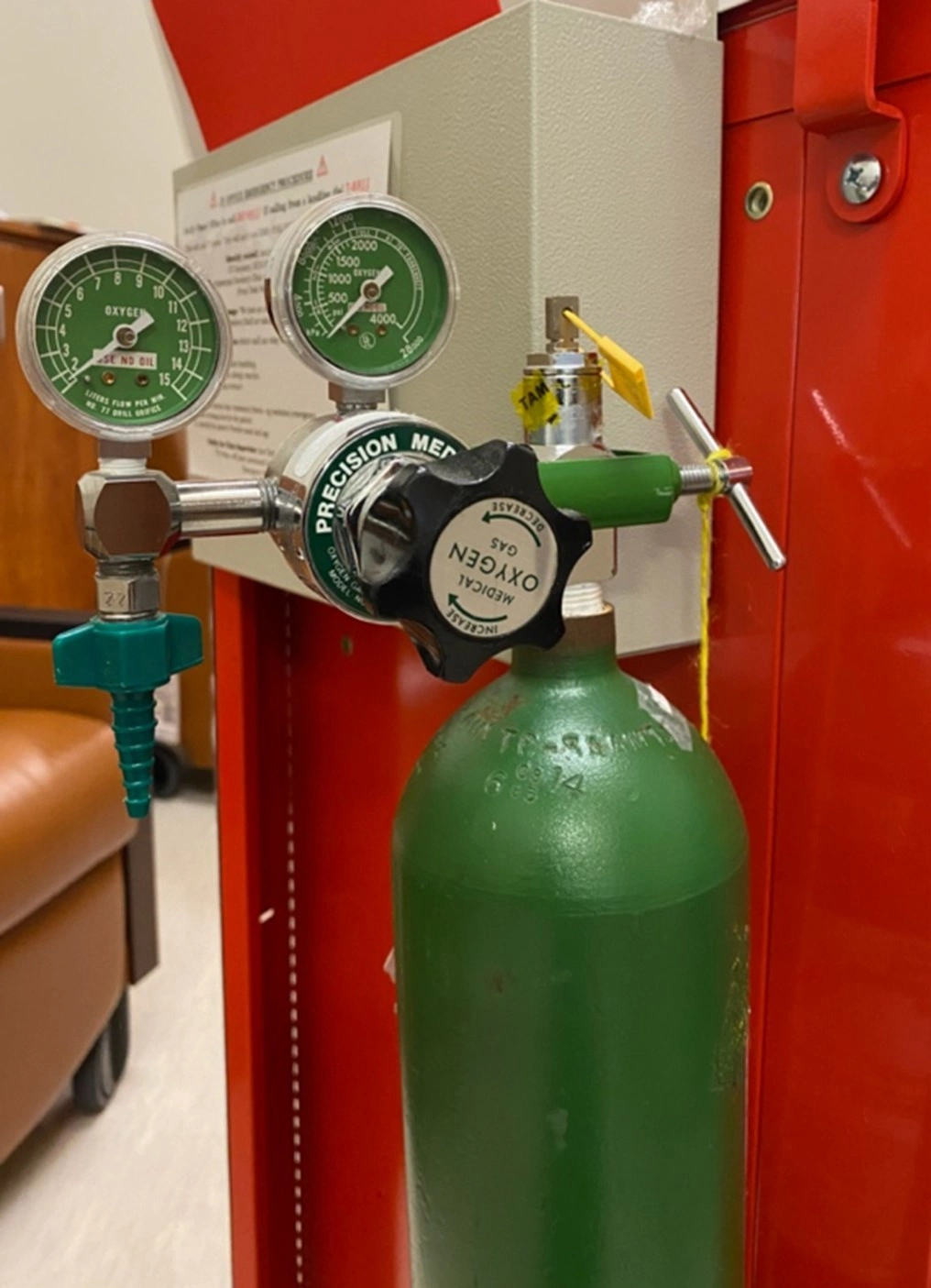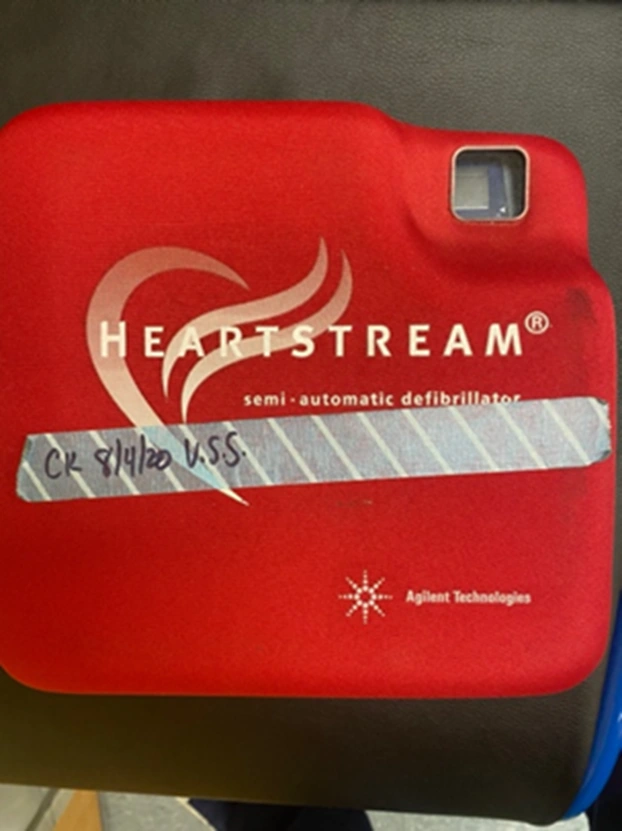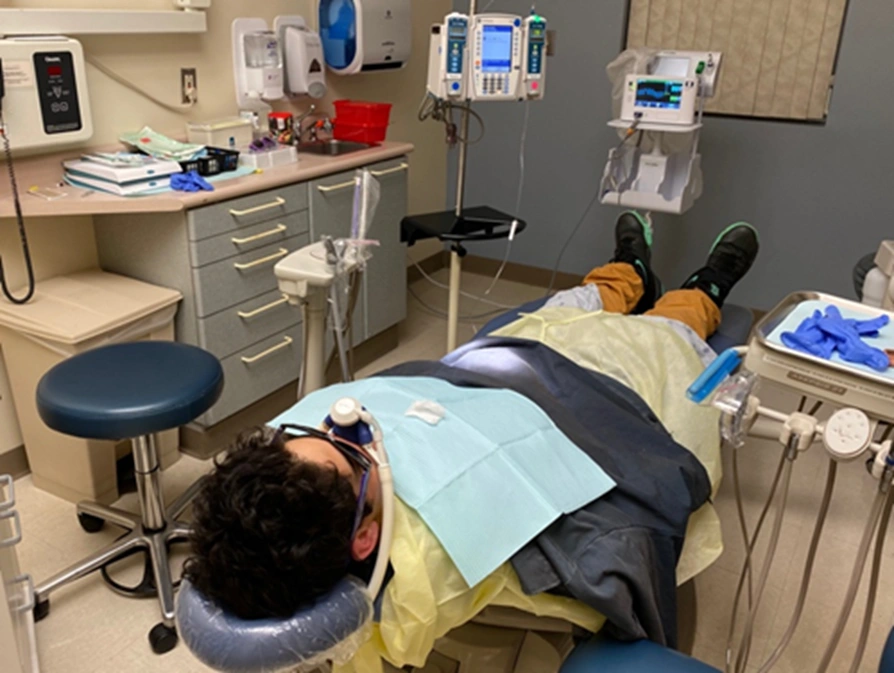Management of Pediatric Medical Emergencies in the Dental Office
Course Number: 391
Course Contents
Emergency Equipment
Emergency oxygen - The basic goal of nearly all emergencies in the dental office is to maintain sufficient oxygenation of the brain and heart. Thus, oxygen should be available for every emergency except hyperventilation. It should be provided with a clear face mask for patients with spontaneous breathing, and a bag-valve mask for the apneic patient in both adult and pediatric sizes. The oxygen should be available as a portable unit with an "E" size cylinder that can deliver greater than 90% oxygen at a flow of 5 L/min for a minimum of 60 minutes. For ease of transport and delivery, the oxygen cylinder is usually attached to the emergency crash kit trolley (Figure 6). The Dentist must perform periodic check to ensure that the volume and pressure of oxygen in the tank is at appropriate levels.
Figure 6. "E" Size Oxygen Cylinder.
Suctioning equipment - Although usually available in the treatment room, a portable suction unit is useful for suctioning fluids and vomit if the emergency occurs in another area of the office (waiting room).
Automated electronic defibrillator (AED) - The AED is used during cardiac arrest to shock a defibrillating heart. Resuscitation with BLS during cardiac arrest is most successful if defibrillation is performed within 3 to 5 minutes of collapse.2 Manual, automatic or semiautomatic defibrillators are available. Manual defibrillators require interpretation of a monitor or cardiac rhythm strip by a trained rescuer. Automated and semi-automated AEDs analyze the patient’s rhythm and advise the rescuer to defibrillate if ventricular tachycardia or ventricular fibrillation is present or to continue CPR if no pulse is present. The AED should accept adult and pediatric paddles (Figure 7). The AED should be placed in an accessible location in the dental office. The Dentist and the staff members should be familiarized with its location for ready access in the event of emergency.
Figure 7.
Automated electronic defibrillator (AED)
Pulse oximeter and blood pressure monitor - While pulse oximeters are usually found in dental offices where sedation and general anesthesia is administered to patients, they are useful in monitoring the effectiveness of CPR efforts. The pulse oximeter monitors the patient’s pulse rate and the percent oxygenation of the blood. It is important to continuously monitor oxygenation in patients receiving sedation (Figure 8).3 This will help to address any deficiencies in oxygenation as most of the sedation medications may cause some level of respiratory depression.4
Figure 8.
Pulse oximeter connected to a monitoring device on a patient receiving oral conscious sedation




